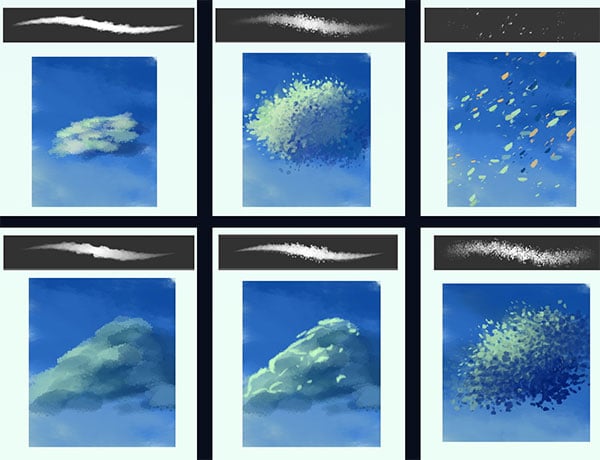
This will soften the edge of the area that we're going to copy.

and select a Feather Radius of 10 and click OK: Go to the menu and choose Select / Feather. In this example I have a selection with a height that is about 1/3 of the original height of the document. The size of the selection doesn't matter so much. Make sure that you cover an area that is not just plain medium gray make sure that you include some light gray and darker gray: Select the Lasso Tool in the tool bar and make a selection similar to the shape of an egg (or at least close to it). Go to the menu and select Filter / Render / Clouds Press the letter D on your keyboard to set the foreground color to black and the background color to white: and select the preset 640 x 480 and click OK: Start by creating a new document: File / New. Note: Jump to step 2 (where you can download a clouds brush) if you're not interested in how the brush was made. In this step we will create the clouds brush that is needed to paint our clouds.

I will try to be as detailed as possible throughout the tutorial. The quality of the end result depends on whether we use your own brush, the downloadable brush or the way you draw your clouds. Unlike most other Photoshop tutorials I wrote, this is not going to be a tutorial in which you just have to follow each and every step to get exactly the image that I will be showing at the end. The clouds filter will also be used in this tutorial, but only to create a clouds brush and it's this brush that we will use to actually paint the clouds. Most clouds tutorials are based on Photoshop’s clouds filter, which is ok if you want a few fuzzy looking clouds without too many details, but I want to show a different approach.


This Photoshop tutorial will show you how to create clouds.


 0 kommentar(er)
0 kommentar(er)
